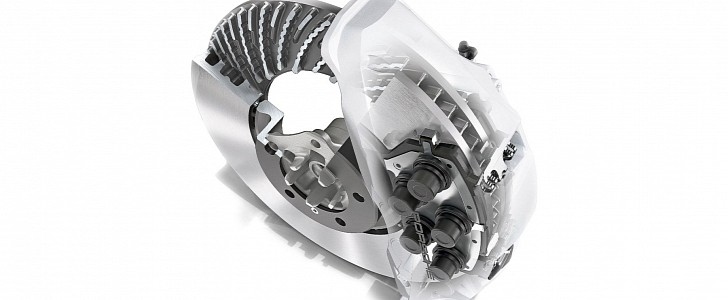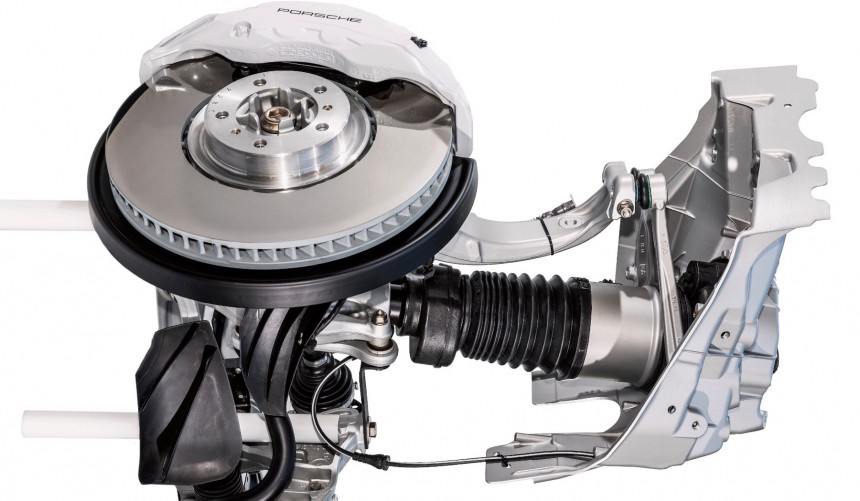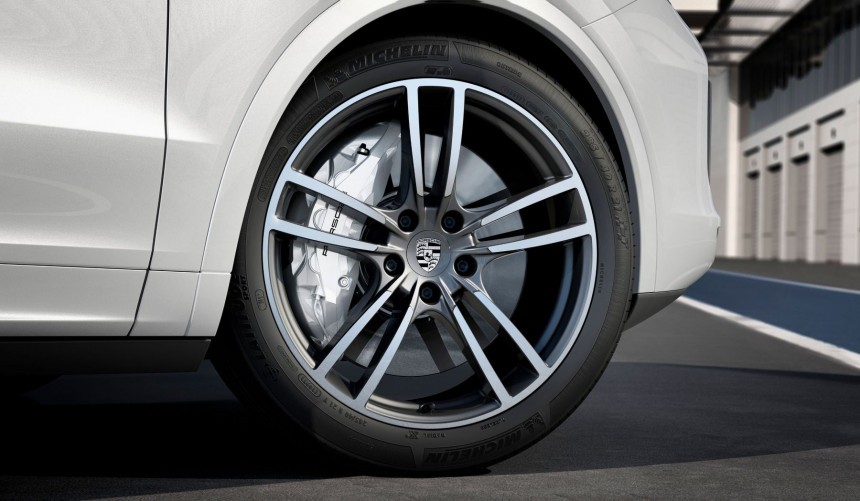The Zuffenhausen-based sports and luxury car manufacturer likes to do things differently. That’s proven by its continuous use of boxer engines but also by its revolutionary braking system which features a unique tungsten carbide coating on each rotor and a set of specifically developed pads that boost performance and reduce wear.
In the automotive industry, standard brake rotors are commonly made from gray iron, which provides decent performance and durability at a relatively low cost.
For better results, carmakers use ceramic composite or carbon-ceramic rotors and pads on vehicles with much more power. Although significantly more expensive to produce, they are more durable and provide better thermal stability.
But what if you could produce a brake rotor that is cost-effective and able to deliver increased performance and durability? This was a question that drove engineers to develop the Porsche Surface Coated Brake (PSCB), a technology that uses a revolutionary rotor coating to provide excellent performance, completely prevents rust, and provides an increased lifespan for both pads and rotors.
The key element here is tungsten carbide, which has been studied extensively and was found to be the perfect composite for the intense requirements of a vehicle’s braking system.
Since manufacturing rotors made entirely out of this material would have cost more than several sets of carbon-ceramic brakes, and the technology to do so is not quite there yet, engineers chose to use standard rotors and coat them with a tungsten carbide layer instead.
After countless hours of research, development, and testing along with tech giants Bosch, they came up with a conventional iron rotor that was laser-processed to offer structure, then galvanized with an interlayer that functions as a flexible bond for the innovative final layer.
The tungsten carbide is applied using a state-of-the-art high-velocity oxy-fuel spraying process where the composite particles are shot onto the rotor surface at supersonic speeds, resulting in an extremely dense, mirror-finish layer with a thickness of just 0.1 mm.
Porsche states that the rotors should be replaced once this layer is gone. Still, considering that we’re talking about a thickness comparable to that of a human hair, it’s only natural to question their lifespan.
However, because of the high density of this layer, it wears out much more slowly than we would imagine. The manufacturer estimates the overall service life of the rotors is increased by about 30% when compared to their conventional counterparts.
To maximize these rotors' efficiency and performance, engineers also developed a special type of brake pads. They experimented with softer versions but found that they wear out too quickly at high speeds, so they added high-density microscopic particles that seep into the tungsten carbide coating. Under normal braking, these particles do not interact with the surface; under high-speed breaking, though, they act like anchors providing excellent stopping power, even at temperatures that exceed 600 degrees Celsius (1112 F).
They produce 90% less dust than conventional pads, making them an environmentally friendly alternative that also maintains the vehicle’s calipers clean and thus extends their lifespan. Porsche included these innovative components as standard on the 2018 Cayenne Turbo, which was released with white-coated calipers to showcase this attribute.
This innovation has led many manufacturers to redesign the conventional brake rotor. Brembo, for example, recently revealed its mirror-like Greentive line, which uses the same high-velocity-oxy-fuel technology to add an extra, high-density layer on otherwise conventional iron rotors.
For better results, carmakers use ceramic composite or carbon-ceramic rotors and pads on vehicles with much more power. Although significantly more expensive to produce, they are more durable and provide better thermal stability.
But what if you could produce a brake rotor that is cost-effective and able to deliver increased performance and durability? This was a question that drove engineers to develop the Porsche Surface Coated Brake (PSCB), a technology that uses a revolutionary rotor coating to provide excellent performance, completely prevents rust, and provides an increased lifespan for both pads and rotors.
The key element here is tungsten carbide, which has been studied extensively and was found to be the perfect composite for the intense requirements of a vehicle’s braking system.
After countless hours of research, development, and testing along with tech giants Bosch, they came up with a conventional iron rotor that was laser-processed to offer structure, then galvanized with an interlayer that functions as a flexible bond for the innovative final layer.
The tungsten carbide is applied using a state-of-the-art high-velocity oxy-fuel spraying process where the composite particles are shot onto the rotor surface at supersonic speeds, resulting in an extremely dense, mirror-finish layer with a thickness of just 0.1 mm.
Porsche states that the rotors should be replaced once this layer is gone. Still, considering that we’re talking about a thickness comparable to that of a human hair, it’s only natural to question their lifespan.
However, because of the high density of this layer, it wears out much more slowly than we would imagine. The manufacturer estimates the overall service life of the rotors is increased by about 30% when compared to their conventional counterparts.
They produce 90% less dust than conventional pads, making them an environmentally friendly alternative that also maintains the vehicle’s calipers clean and thus extends their lifespan. Porsche included these innovative components as standard on the 2018 Cayenne Turbo, which was released with white-coated calipers to showcase this attribute.
This innovation has led many manufacturers to redesign the conventional brake rotor. Brembo, for example, recently revealed its mirror-like Greentive line, which uses the same high-velocity-oxy-fuel technology to add an extra, high-density layer on otherwise conventional iron rotors.








